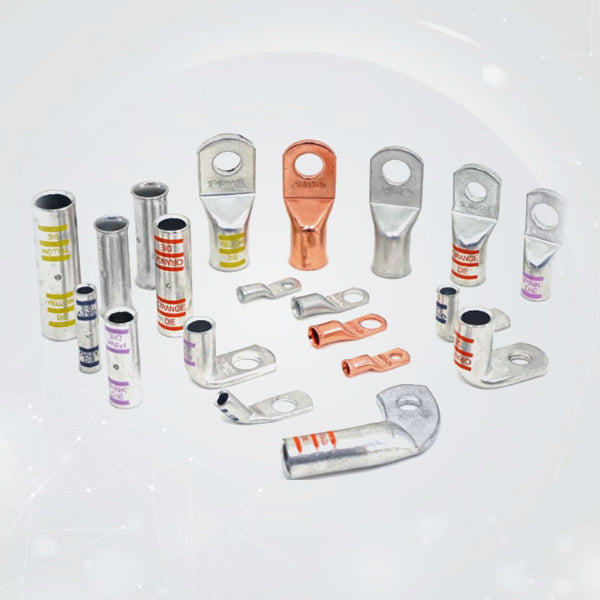
Types of Solar Grounding Lugs and Their Applications
The increasing adoption of solar energy as a sustainable power source has brought with it a heightened awareness of the importance of safety and reliability in solar panel installations. Grounding is a critical aspect of these systems, playing a vital role in protecting both people and equipment from electrical faults. Solar panel grounding lugs are essential components in any well-designed solar array, providing the necessary connection points to the grounding system. This guide provides a detailed exploration of the different types of solar grounding lugs available and their specific applications within solar installations.
The Importance of Grounding in Solar Systems
Grounding in electrical systems, including solar installations, serves several crucial functions, all aimed at ensuring safety and system integrity.
- Safety: Grounding is paramount for protecting individuals from the risk of electrical shock. In the event of an electrical fault, such as a short circuit, the grounding system provides a low-resistance path for fault currents to flow back to the source. This allows protective devices, such as circuit breakers or fuses, to quickly interrupt the circuit, minimizing the duration of the electrical hazard. Solar panels generate direct current (DC) electricity, which, while generally considered less dangerous than alternating current (AC), can still pose a significant shock hazard if not properly managed. Solar grounding lugs facilitate the creation of a safe grounding system, diverting fault currents away from people and equipment.
- Equipment Protection: Grounding also plays a vital role in protecting sensitive solar equipment from damage caused by voltage surges and lightning strikes. These events can induce high voltages in the solar array, which can damage or destroy inverters, charge controllers, and even the solar panels themselves. A properly designed grounding system, incorporating appropriate solar grounding lugs, provides a path for these surge currents to dissipate safely into the earth, preventing them from damaging the equipment.
- System Performance: In addition to safety and equipment protection, grounding can also contribute to the overall performance of the solar system. Electrical noise and interference can degrade the quality of the power produced by the solar panels and reduce the efficiency of the system. A well-designed grounding system can help minimize these unwanted electrical disturbances, ensuring that the system operates at its optimal performance level.
Types of Solar Grounding Lugs
The selection of the appropriate solar grounding lugs is crucial for establishing a reliable and effective grounding system. Several types of lugs are available, each designed for specific applications and environmental conditions.
1. Lug Material: The material of the lug is a primary consideration, as it directly impacts its conductivity and corrosion resistance.
- Copper Lugs: Copper is an excellent conductor of electricity and is a common material for grounding lugs. Copper lugs provide a low-resistance connection, ensuring efficient current flow. However, copper is susceptible to corrosion, particularly in outdoor environments.
- Tinned Copper Lugs: To enhance corrosion resistance, copper lugs are often coated with a layer of tin. The tin coating acts as a protective barrier, preventing oxidation and other forms of degradation. Tinned copper lugs are a popular choice for solar installations, especially in coastal or high-humidity environments where corrosion is a concern.
- Aluminum Lugs: In some solar installations, particularly those involving aluminum frames or structures, aluminum lugs may be used. Aluminum is lightweight and corrosion-resistant, making it a suitable material for these applications. However, it's essential to ensure compatibility between the lug material and the grounding conductor material to prevent galvanic corrosion, which can occur when dissimilar metals are in contact in the presence of an electrolyte.
2. Lug Design: The design of the lug also varies depending on its intended application.
- Grounding Lugs: These lugs are specifically designed for grounding purposes, incorporating features that ensure a secure and reliable connection to the grounding conductor. They may have a larger contact area or a specialized design to facilitate the attachment of the grounding wire.
- Wire Lugs: Wire lugs are used to connect grounding wires to various components in the solar system, such as equipment enclosures or mounting structures. These lugs are typically designed to accommodate a range of wire sizes and may have different barrel lengths or stud hole sizes.
- Panel Grounding Lugs: These lugs are specifically designed to attach to the frames of solar panels, providing a convenient and reliable grounding point. They often have a unique shape or mounting mechanism that allows them to be easily installed on the panel frame.
3. Lug Mounting: The method used to mount the lug to the grounding surface is another important consideration.
- Bolt-On Lugs: These lugs are attached to the grounding surface using bolts or screws. They provide a secure and reliable connection and are suitable for a wide range of applications.
- Lay-In Lugs: Lay-in lugs are designed to allow the grounding conductor to be "laid in" and secured without the need for cutting or splicing the wire. This can simplify installation and reduce the risk of errors.
- Compression Lugs: Compression lugs use mechanical pressure to create a secure connection between the lug and the grounding conductor. These lugs are often used for larger wire sizes and in applications where a high degree of reliability is required.
Applications of Solar Grounding Lugs
Solar panel grounding lugs are used in various applications within a solar installation to ensure the safety and proper functioning of the system.
- Panel Grounding: Connecting the frames of solar panels to the grounding system is essential for protecting against electrical shock. If a fault occurs within a solar panel, the frame may become energized, posing a risk to anyone who touches it. Grounding the frames provides a path for fault currents to flow to the ground, tripping protective devices and preventing electrical hazards.
- Equipment Grounding: Grounding the metal enclosures of inverters, charge controllers, and other electrical components in the solar system is also crucial. This protects against electrical shock and helps to minimize electrical noise and interference.
- System Grounding: Establishing a grounding electrode system for the entire solar installation is necessary to provide a stable ground reference for the system. This may involve driving ground rods into the earth or connecting to an existing building grounding system.
Installation Best Practices for Solar Grounding Lugs
Proper installation of solar wire lugs is essential for ensuring the effectiveness of the grounding system.
- Surface Preparation: Before installing the lug, it's crucial to prepare the grounding surface properly. This involves cleaning the surface to remove any dirt, corrosion, or paint that could impede conductivity.
- Lug Selection: Choose the appropriate lug type and material for the specific application and environment. Consider factors such as the wire size, the grounding surface material, and the potential for corrosion.
- Secure Connection: Ensure that the lug is properly attached to the grounding surface and that the grounding conductor is securely connected to the lug. Use the appropriate hardware and torque specifications to create a tight and reliable connection.
- Corrosion Protection: In harsh environments, such as coastal areas or locations with high humidity, take extra precautions to protect the connections from corrosion. This may involve using tinned copper or aluminum lugs and applying a corrosion-resistant compound to the connection.
Technical Details Recap
- Lug Materials: Copper, Tinned Copper, Aluminum
- Lug Designs: Grounding Lugs, Wire Lugs, Panel Grounding Lugs
- Key Application: Safety and equipment protection in solar systems
By understanding the different types of solar battery terminal and their applications and by following best practices for installation, solar installers can ensure the safety, reliability, and long-term performance of solar energy systems.

